
TEACHING KIDS GUN SAFETY - 42 THINGS THEY NEED TO KNOW
James Forrester
-
Owning a gun comes with its own set of responsibilities. Storing and maintaining your gear is critical. But. these are also to keep everyone around you safe. It’s still a weapon after all. Though you only intend to use or keep it for safety, it can’t be guaranteed at all times. Teaching kids gun safety shouldn’t be just protocol. This is also a social responsibility they’ll carry with them to adulthood.
Quick NavigationTeaching Kids Gun SafetyIf you have kids, the risk of having a gun doubles up. As with everything else, you’re probably the first person your kids are learning about guns from. Your guns are the first ones they will encounter in their life. They’re part of the next generation of gun owners and users. It’s up to you to let them grow up with the right morals and behavior that make guns safe around them, and not be the ones who cause harm with it.
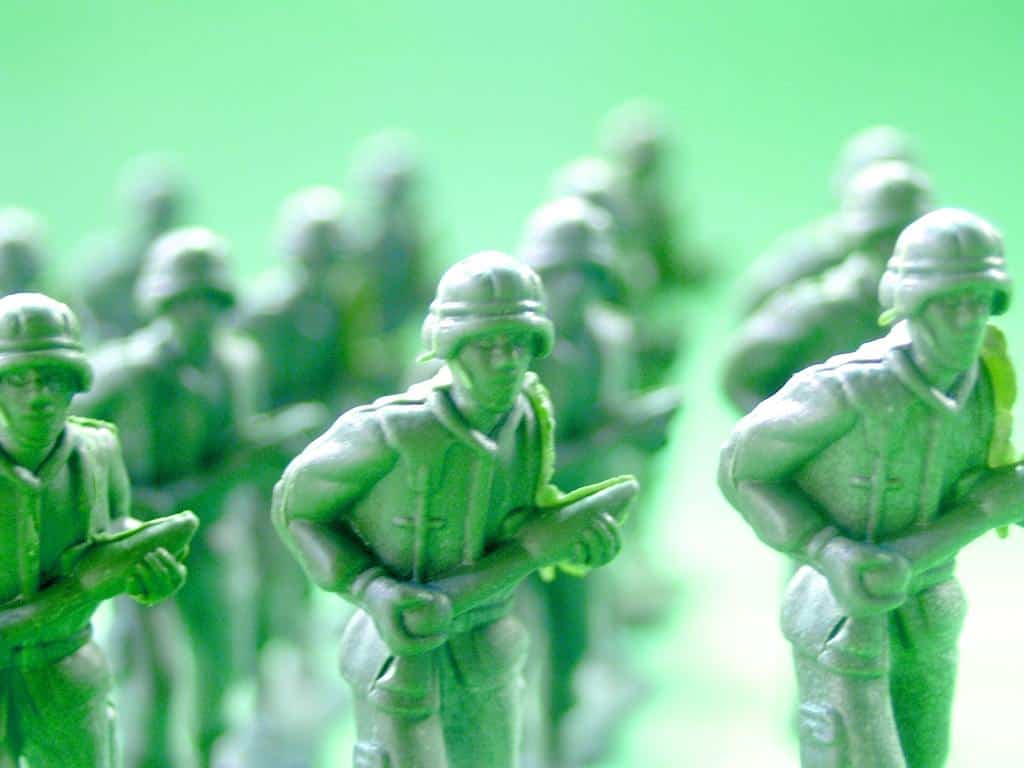
You can go out of your way to keep guns away and hidden from your kids, but that won’t keep their curiosity at bay. Keeping them informed about guns and gun safety will be more productive than keeping guns away until they’re older. Here are some rules and answers to help with their curiosity concerning guns.
General Rules and Behavior Around a Gun
Guns shouldn’t be taken lightly. Gun safety is an issue that impacts all people. Whether you own a gun or not, it should be mandatory that everyone learn the basic rules with guns. That includes your family, and most importantly kids.
The National Rifle Association's Eddie Eagle GunSafe Program identifies four things as the usual drill when you find yourself in the presence of a gun or a person with a gun that’s potentially dangerous to others. Make sure you let these be ingrained in your child before they learn about guns elsewhere.
Stop What You’re Doing
The first thing your kid needs to learn to do on instinct upon seeing a gun is to stop whatever they’re doing. Nothing else matters if their life is at stake. A gun can take that away in an instant.
Leaving any activity to take in where the gun is, who’s holding it if someone is, and to check if it’s unattended or if it's safely locked in storage will increase their awareness. It will make them be better equipped to take themselves out of the situation or place where the gun is.
Don’t Touch the Gun
A gun may look like a toy. Even if it doesn’t, it may ignite their curiosities. You should make it clear to your kids that under no circumstances should they touch a gun if they ever see one. Some guns do look like toys, especially small pistols and handguns. Your kids shouldn’t assume it is a toy unless they’re a hundred percent sure that it is.
If it’s real, there’s a high chance they won’t know how it works. Clumsy or not, the probability of accidents are at an all time high especially with kids. One thing that goes along with this rule is not to go anywhere near the gun at all.
Leave the Area Immediately
Anywhere with an unattended gun or a gun in the possession of someone with unclear intentions is not safe. The presence of a gun, especially with people they can’t trust, should be a red flag that your kid knows to recognize immediately. Then, their next move should always be to leave the area or place as soon as possible.
Tell an Adult If You See a Gun
Kids should know better than to investigate or handle the situation by themselves. Telling an adult should be their next move because then, the adults would know how to respond to such situations. Kids should also be taught to tell their parents if they ever see guns in their neighbor’s or playmate’s house, especially if they don’t feel it’s in the safest place. This might just save a life, especially of their peers.
General Rules and Facts About Guns
Our perception of guns starts to form in childhood. Like other taboo topics, information about guns and gun safety can be picked up from anywhere. If you don’t educate your child the way you want to, there’s a tendency for them to look to others for that information and be misguided. These are general trivia that may seem simple. But, they can be the foundation for them to be rightly educated about guns and their proper use.
Guns are Not Toys
The media and video games may have conditioned kids to think lightly about guns. It’s portrayed very loosely on every screen they’re exposed to. If you don’t give them a realer definition of what guns are and what they can do, this might be the only form of education they get about it. Before they even form a trivial perception of guns or think it doesn’t affect grave consequences, drill it down to your kids that guns are not toys.
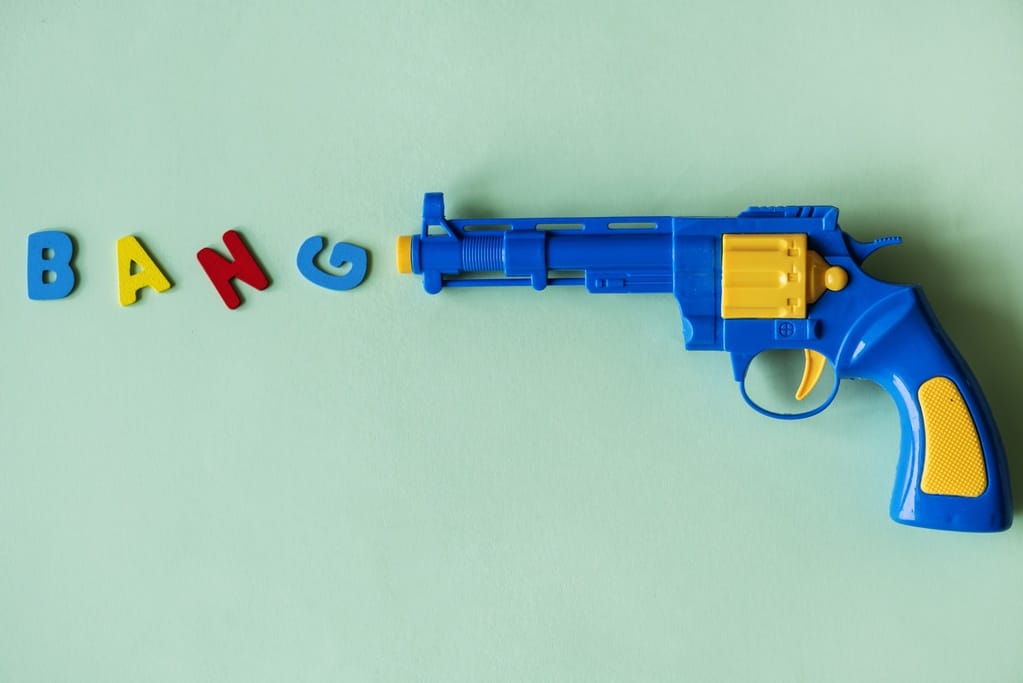
Guns are Tools and Weapons
Guns are not as cool or as real as they seem in movies and video games. On reel, they’re just props in a production but we never think about them like that. They are in no way the real thing. In real life, guns are firearms. Google defines it as “a weapon incorporating a metal tube from which bullets, shells, or other missiles are propelled by explosive force, typically making a characteristic loud, sharp noise.”
Guns are Dangerous
As tools, guns are used to injure or kill another. It takes so much to master firing one accurately, more so without sending a person back from the intensity of the blow. That’s why people, even adults, practice it over and over.
No one carries or owns a gun for no reason at all. There’s usually an intention, whether to harm others or protect oneself. Even so, guns are inherently dangerous because one small mistake can produce a lifelong impact.
Guns on TV or Video Games are Not Real
On television, when someone is shot with a gun, they are able to still crawl, walk, run, and basically do things. It’s as if they only got a wound, instead of a gaping hole on their skin and a bullet inside their body. In video games, characters are resurrected after being shot dead by an opponent. That’s not how it works in real life. You don’t just get back up after getting shot, and sometimes, people lose their life from it.
Guns Can Injure or Kill People
Those unrealistic reels and games are not truthful in their portrayal of guns. Kids need to know that people go through so much trauma physically and sometimes even psychologically when they’re shot with a gun. People have to go through surgery if they even survive a gunshot wound. Some people, if they don’t die on the spot, eventually lose their life from the massive loss of blood.
Guns Don’t Give You a Second Chance
We never see the nitty gritty details of what comes after getting shot: having to put pressure on the wound to stop the bleeding, getting the bullet out, and healing from it. You don’t get a second chance with guns. You don’t get resurrected, and one click on a medicine kit won’t suddenly heal you in a matter of seconds.
In some isolated cases, bullets are left inside a person’s body because taking it out would put them in a much more dangerous situation. Letting kids know these things or have an idea about circumstances like that ingrain the permanence of the damage guns can inflict.
Guns are Not Inherently Bad
Guns are not inherently bad, but they can be if people use them with the wrong intention. With all those things said, it’s also important not to put all the blame on guns. Guns are not inherently bad. It’s the people with the wrong mindset that use them that make guns bad to people.
Guns are a Powerful Instrument
With all the negative connotation associated with guns, your kid can probably think of a hundred different scenarios that all end up with the conclusion that guns are evil. That’s not exactly what you should aim for when talking or educating them about it. Make sure to clear up the fact and possibility that guns can also be used for fun.
Some People Keep Guns for Safety
It’s important to let kids know the perils of a gun in itself and a gun in possession of someone with bad intentions. It’s also important to clear up that some people keep guns so they can feel relief from knowing they have a tool to protect themselves.
This is especially recommended if you plan to keep guns in your home, because the contrast in your words and your actions may confuse them. Let them know that some people keep guns to ensure safety, and that is also your intention. This is helpful so they don’t grow up with strong animosity towards guns.
Some People Use Guns for Hunting
Just like they are addicted to video games or playing with dolls, to some people, hunting is a hobby and they do that with guns. It’s highly acceptable that they wouldn’t get this especially if they’re a young child. Essentially, it’s still killing animals. You might have to simultaneously teach your child hunting ethics, but ultimately, this can direct their perception of guns towards the right direction.
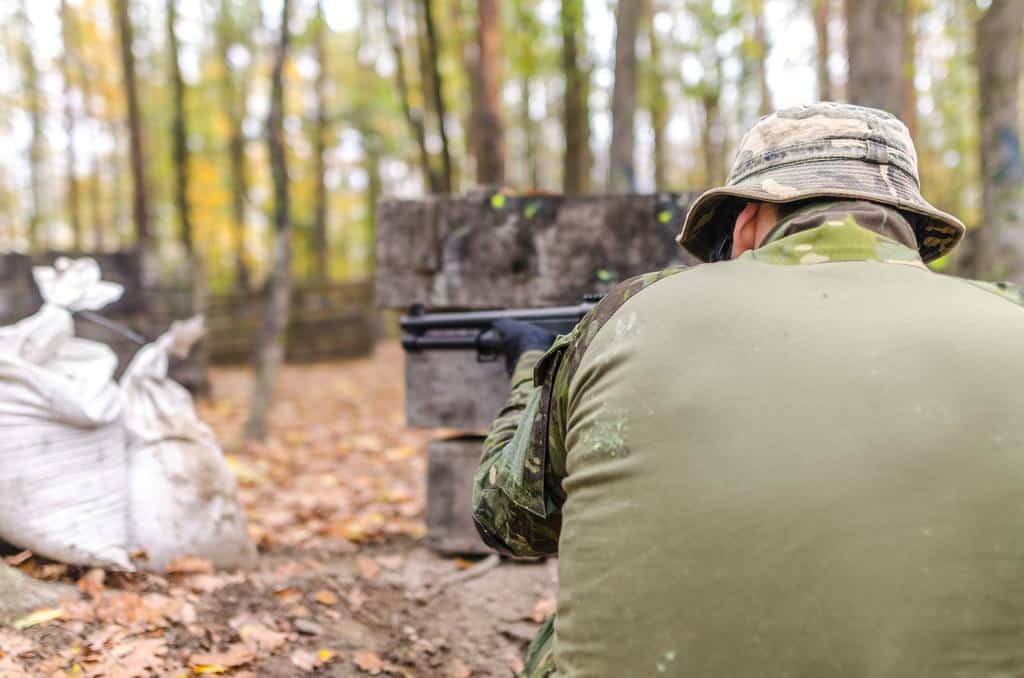
Always Treat Guns with Respect
By now, your child should know not to think lightly of guns. In teaching them about firearms, you should also consider they might be users or keepers one day. A good way to lead them to the right mindset is to condition them to treat guns with respect. Let them know that they have power when they have a gun and that they should use that power for good and not for harm.
Mass Shootings are Not Normal
Mass shootings are getting more and more common in today’s news. Every month, if not every week, there’s a new incident and casualties are always rising in numbers. However, you should reassure your kid that this is not a normal thing that they should learn to live with. They might not know the gravity of the tragedy in those scenarios, but they should understand how it’s connected to guns and people who shouldn’t have been trusted with guns.
Pellet and BB Guns are Not Toys
Pellet and bb guns are good initiation for kids when it comes to educating them about gun safety and gun use. However, you should treat them as if they’re real guns because these can also have grave consequences. Being hit by their ball bullets may not penetrate the body like actual bullets do, but they can hurt and even kill if hit in sensitive parts like the eyes or the soft part of the head.
Rules to Follow If You Have Guns in the Home
Statistics show that accidents and injury cases due to guns are more likely to happen inside a home where guns are kept than in a house without guns kept inside. Still, it’s a relief for some people to have a gun inside in a safe should the need for self-defense comes up. It’s generally okay as long as you follow the safest measures in storing guns. However, if you have kids and guns in your home, take extra precautions by having these rules in place.
Store and Lock Up Guns At All Times
A gun should always be stored in its safe and locked up. Kids should be taught this but not without the knowledge of what guns are, what they do, and what they’re used for. This eases their curiosity and lets them know the reason why it needs to be put inside its storage.
Protect Kids by Not Allowing Access to the Gun Safe or Storage
It’s only for their protection that kids should not be allowed to know the lock combination or know where the keys to the gun safe are kept. This should be a rule they know by heart, so they also won’t try to search for it in your house.
Emphasize Access to Gun Safe or Storage is For Parents Only
With this rule in place, you can make sure that they know guns are something that only adults in the home are allowed to meddle with. It should be understood that they aren’t supposed to go near or even fumble with the storage of guns.
Supervision by an Adult is Required
If they ever get curious about guns, it might be good to let them be exposed to the guns you own and have in the house. This way, they’re not looking for information where you’re not sure what they’re learning. However, make it clear that they’re only allowed this access because of your permission and because you’re the one showing it to them.
Play is Not Allowed With a Gun
Guns are never to be played with, even if it’s unloaded and can act as a toy. You should never allow your kids to use guns as toys because it reverses anything that you tell them about the dangers of guns.
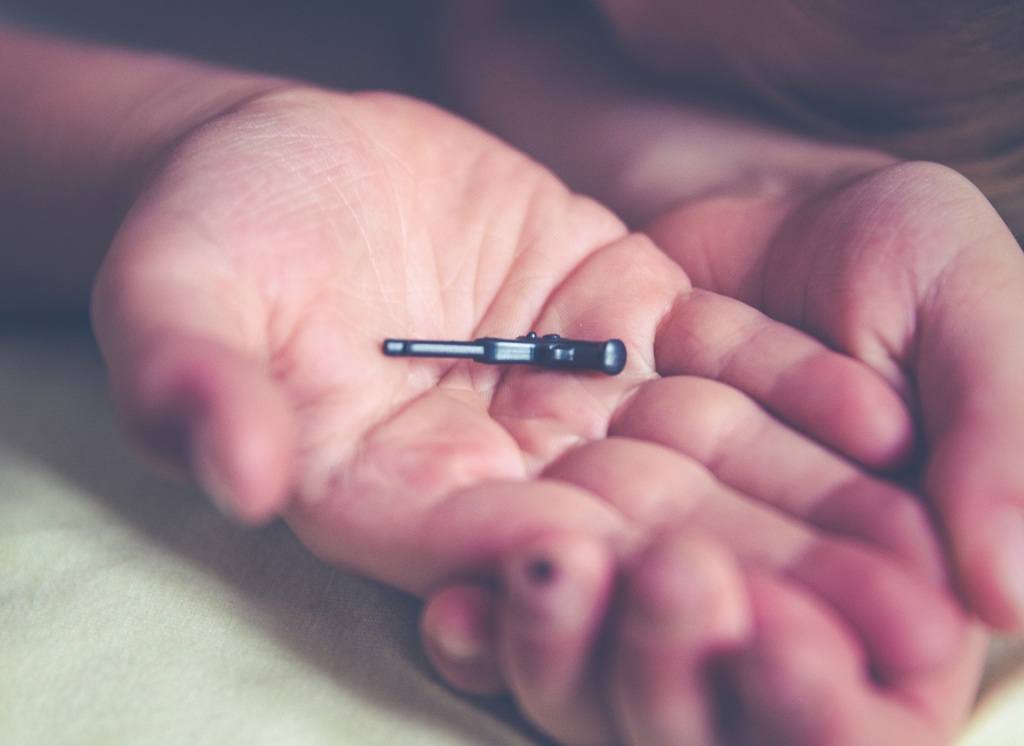
Storage of Guns and Ammunition Needs to Be Done Separately
It’s no secret that guns and ammunition should be stored separately. It may be to protect each of the items better, but it’s also for protection. This is one way of drilling in the fact that guns should be unloaded even inside their gun cases or other storage units.
Rules for When They See a Gun in a Neighbor’s House They Play In
Guns inside your home are one thing. Inside a neighbor’s house they visit regularly becomes more dangerous. You’re not sure about their storing methods and how well it’s locked. Even if they don’t frequent those places, your kids should be aware of different behaviors they should have in a house with guns in it to ensure their safety.
Don’t Go Near a Gun
Kids might know not to go near an unattended gun. Even if it’s inside a gun cabinet or safe, they should be trained not to go anywhere near it. They can’t ever be sure of how secured the guns are. If they accidentally open it, they might just be tempted by an intense curiosity to explore other people’s guns.
Get Away From Any Gun
Keeping themselves away is the most secure move to do, especially if the gun is not safely stored or if it’s placed where kids can easily reach and access them. It’s not the right way to store a gun - and they should know that. But, they should know to keep distance from a gun.
Ask to Go Home or Call a Parent
Your kids should be taught not to feel shy or scared to ask to go home if they feel uncomfortable in the presence of a gun. They should also know how to call a parent to pick them up should they feel the desire to leave the premises.
Tell an Adult
Kids should be advised to tell their parent once they discover a gun in an unsafe and unlocked place in their peer’s house. This might be a sign of reckless supervision and you can have the authority to prevent your child from going in an unsafe environment. If it proves to be really dangerous, this might even save their peers from impending danger.
Rules for When They See Someone With a Gun or Emergencies
From these tips and rules, it shows there are a lot of ways to protect your family, especially young kids, from accidents and even intentional incidents done with guns. Once they go beyond that front door, though, things are out of your control. Gun safety for kids should also equip them with what to do in case they encounter an emergency concerning guns outside your home.
Get Away From the Person
If they find themselves in a scenario where a person with a gun, even with concealed carry becomes a threat, the way to ensure their safety is to get themselves away from the person. This is usually in a place where they can’t be a direct target. They should also do this as quickly and as quietly as they can.
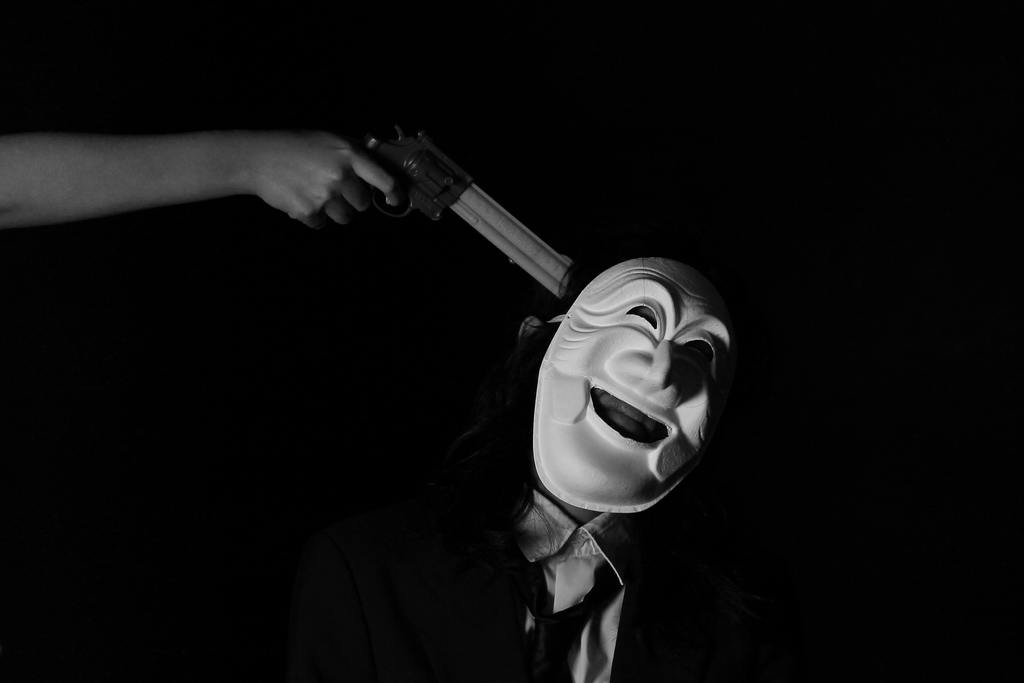
Tell an Adult or Call 911
Telling an adult about the dangerous person with a gun is the first and best thing they can try to manage the situation. Kids shouldn’t be the ones to alleviate the problem. They should get away as far as possible. If another adult is not present, they should call the police immediately.
Run, Hide, and Listen to Authorities or Their Instincts
It’s an unfortunate reality that we’re facing now. Shootings are happening everywhere - schools included. In the event of an emergency where a shooter starts firing, kids should listen to their teachers, run, hide themselves, and prioritize their safety. They should also trust their instincts because more often than not, their intuition wouldn’t lead them to anything that might harm them.
Rules for Using Guns
Some might argue that kids should be taught how to use a gun when they’re at the right age. We can’t argue otherwise. It eventually depends on the parents, but it’s also possible and can even be beneficial. These are rules for when your kids are going to handle a gun.
There are other safety precautions while you’re teaching kids to fire. These are general rules for keeping a safe environment and for preventing any accidents before they even touch one gun.
Don’t Use a Gun Without Adult Supervision
This is the number one rule that you should impose upon your kid once they get old enough that you decide to teach them how to use one. Even if they think they understand guns, know the implications of gun misuse, and the dangers of improper handling. They shouldn’t be allowed to use one without adult supervision, more specifically their parents.
Use Guns in a Controlled Environment Only
There is no reason that at their age, they would use guns in an unprotected or unsecured place. They may be out hunting with an adult. In this case, the wild can also be safer than any other location within common places for people. Otherwise, they should only be allowed to touch and use a gun inside a shooting range facility with the permission and supervision of an adult.
Wear an Eye and Ear Protection at All Times
Firearms are loud. That’s a fact. Exposure to such loud gunshots, no matter the instrument used, can cause damage to the inner workings of humans’ delicate ears. Eventually it might result in permanent hearing loss.
The same perils are posed with the eyes, though it happens differently. They emit gun powder that can get to the eyes. If not, this can settle on the hands and irritate the eyes when rubbed with them. Adults and kids alike should always wear safety glasses and earplugs whether they shoot in an open space or inside a shooting range.
Assume That a Gun is Loaded
This is another given rule that should be an instinct to kids. When they see a gun, they should always assume that it is loaded with ammunition. This will make them always extra careful around guns, whether they know it’s loaded or not. As they say, prevention is better than cure. Preventing any accidents is always better than having to heal from a gunshot wound.
Point the Gun in a Safe Direction
Much like holding a knife, scissors, or any deadly instrument, you should always point a gun in a safe direction. This means it’s not pointed at any person, animal, or thing. Accidents can happen and kids especially who are more likely to get clumsy might accidentally shoot at someone, or worse, themselves.
Never Point a Gun at Someone
There’s only one intention when you point a gun. It means you have an intention to kill. Seeing as you should be teaching morals first and foremost to your kids, it should be easily understandable that they must never point a gun at someone.
Don’t Point the Gun If You’re Not Ready to Shoot
Pointing a gun at anything should only be done if you have the intention to shoot and if it’s going to be followed by the act. Otherwise, there’s no reason for you to point a gun. Practicing your aim and accuracy shouldn’t be used as an excuse as there are other ways to do that without pointing a gun.
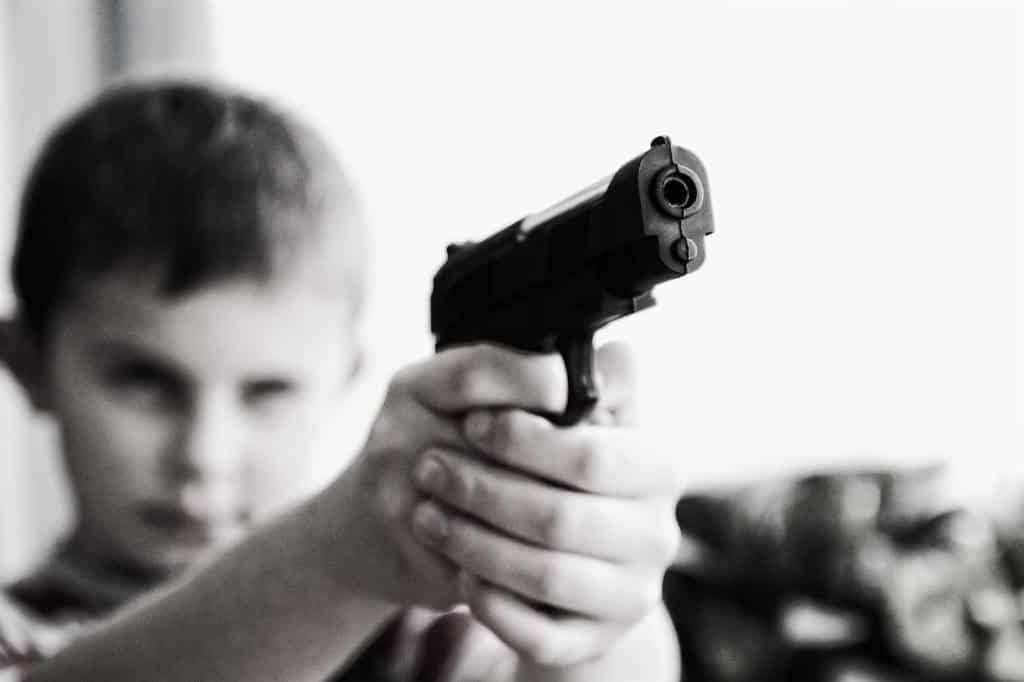
Keep Guns Unloaded Until Ready for Use
The same way that you’re not supposed to point a gun without the intention to use it, a gun should be kept unloaded at all times until it’s being prepped for actual use. Guns can go off accidentally and the number of instances when children accidentally shot at someone or at themselves is alarmingly high. This is one way to prevent childhood gun accidents.
Don’t Put Your Finger on the Trigger
Putting the finger on the trigger is one way of increasing the chances of an accident. This is not something to joke about or use as a way to show off because it seriously endangers the people around them including themselves.
Check Your Surroundings Before Firing
This is a rule of shooting. Checking their surroundings mean being sure of the target, what’s beyond it, and everything else around it. In shooting ranges, they should check for a backdrop that will capture bullets or stop them if they ever miss the target. In open spaces like in the wild, they should always check that no other person is on the background. They should also check for anything that might cause the bullet to ricochet like solid steel or even surfaces of water.
Check That the Barrel is Clear
Even if it happens in a split second, so many things can happen before the bullet is actually released from the barrel of the gun. Make sure it is not blocked and that it is perfectly clear before firing. Doing so quickly before using the gun can prevent situations from turning completely bad.
Handle the Gun With Extra Care if it Doesn’t Fire After Pulling the Trigger
There are reasons a gun might not fire. It might be that the gun is due for retirement or there’s something wrong with either the gun or the bullet. Either way, if a gun doesn’t fire after pulling the trigger, it’s highly dangerous to be around. People, including adults supervising the child, should take extra careful measures around it.
Use the Right Ammunition
This goes along with the previous point. Using the right ammunition is the surest way that the gun will be perfectly functional and there will be lesser chances of accidents. The ammunition should also have been stored properly so there are no external corrosion that will affect the accuracy of the shot.
Related: Saving Your Gun Safes from Rust and Corrosion
Conclusion
Guns and kids are two things that don’t fare well together. It’s highly risky to keep a gun inside your home when you also have kids. But, it’s almost impossible to prevent their interaction with guns or at least information about it. They’re bound to learn about it or seek out what the fuss about guns is all about.
Make sure you’re the first one to tell them about guns so you can form how they perceive it as they grow up. These tips and rules are just some basics to start doing and telling them from the beginning and until they’re old enough to use guns themselves.
More Gun Articles
